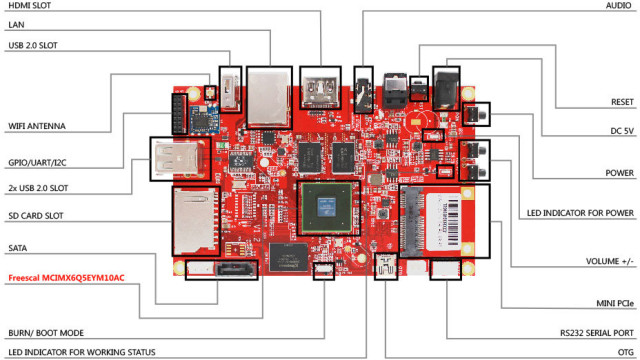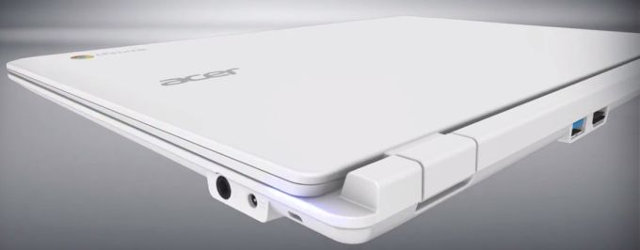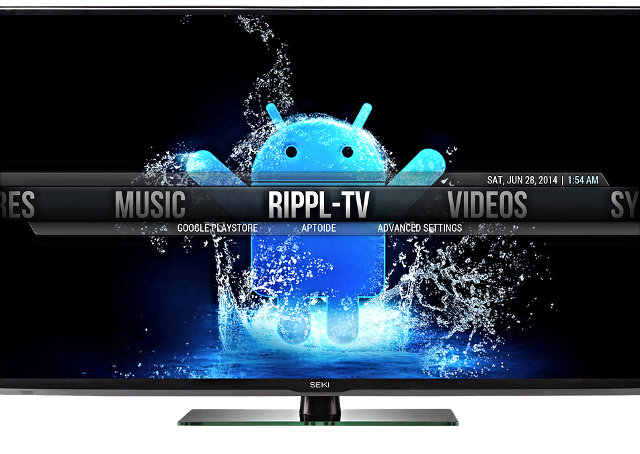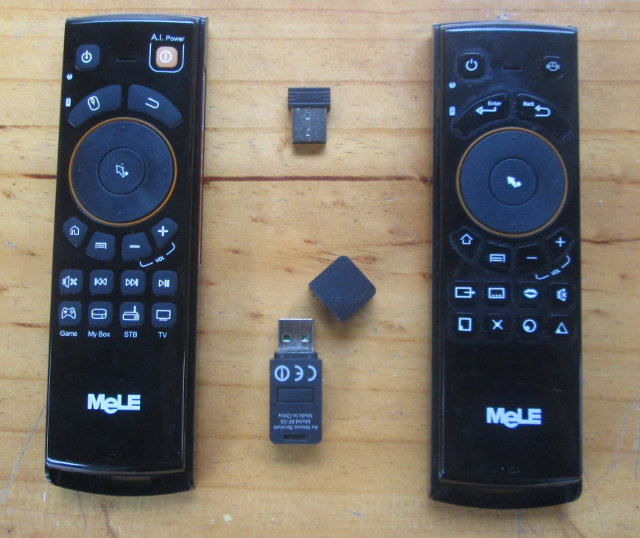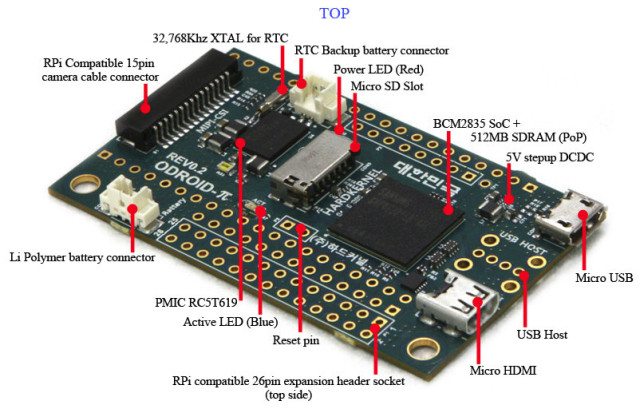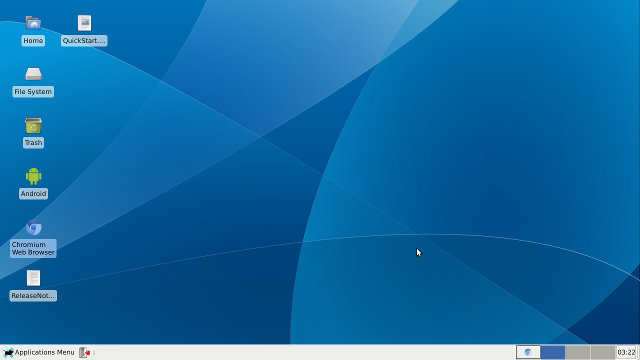TBS 2910 Matrix, also simply called TBS Matrix, is a board powered by Freescale i.MX6 Quad SoC with 2GB RAM, 16 GB eMMC, and supporting various TBS USB DVB tuners. The company provides images for Ubuntu, Android, and something called Matrix TV. The company also releases the source code for the boards, and two OpenELEC developers, namely Ovi and Vpeter, though it could be a nice idea to port OpenELEC to TBS Matrix, and that’s exactly what they did. The video demo below shows online video streaming via 1channels add-on, which can be done with any Android or Linux media player running XBMC or OpenELEC, but the second part is more interesting, as it shows Live TV from a Cable TV USB tuner connected to the board. Ovi also confirmed the system supports DVR, and you can also use the board as a micro IPTV server. DVR function is supported […]
Acer CB5 Chromebook To Feature Nvidia Tegra K1 Processor, 13 Hours of Battery Life
It seems Nvidia Tegra K1 is getting in more hardware than its predessors. It can not only be found in Jetson TK1 development board and Shield tablet developed by the company, but also products such as Xiaomi MiPad, as well as Google Tango Project Tablet devkit. Acer CB5 Chromebook should also launch very soon with Tegra K1 quad core processor, a 13.3″ display, and the company claims it should last 13 hours based on Google’s power_loadtest. Preliminary specs for Acer CB5 Chromebook: SoC- Nvidia Tegra K1 quad core Cortex A15 @ 2.1 GHz with Kepler GPU System Memory – 2 to 4 GB DDR3 Storage – 16 / 32 GB flash Display – 13.3″ display with 1366×768 or 1920×1080 resolution (TBC) depending on model, and optional touchscreen support Video Output – HDMI Audio – 3.5mm audio jack, speakers Connectivity – 802.11 b/g/n/ac Wi-Fi USB – 2x USB 3.0 ports, 1x […]
Rippl-TV Android TV Box Brings XBMC Front and Center
Most Android TV boxes come pre-loaded with XBMC, but Rippl-TV goes a step further by replacing the Android home screen, or other common found launchers, by XBMC which is used not only as a media center, but also to launch apps, access the settings, and so on. Everything is done within XBMC. The hardware is very similar to SZTomato / Enybox M8, and Shenzhen Tomato appears to be the company behind this project, or at least promoting it. Rippl-TV hardware specifications: SoC – AMLogic S802 quad core Cortex A9r4 processor @ 2GHz with Mali‐450MP6 GPU System Memory – 2GB DDR3 Storage – 8GB NAND flash + SD card slot Connectivity – 10/100M Ethernet, dual band Wi‐Fi (2.4GHz/5GHz) & Bluetooth (AP6330) Video Output – HDMI 1.4b, AV. HDMI supports 1080p, 4K2K 30fps Audio Output – HDMI, AV, and optical S/PDIF Video Codecs and Containers – MPEG1/2/4, H.264, AVC, VC‐1, RM/RMVB, Xvid, […]
Some Projects on Nvidia Jetson TK1 Development Board: Nintendo Emulator, USB3 Webcam, and Robotics
Nvidia Jetson TK1 is a development board powered by the company’s Tegra K1 quado core Cortex A15 processor, and especially a Kepler GPU that allows for OpenGL 4.4. It has shipped to developers around April/May, and some of them have showcased their projects, or tested some hardware. Dolphin Emulator on Nvidia Jetson TK1 Dolphin is an emulator for Nintendo GameCube and Wii console that supports full HD (1080p) rendering, and run on Android, Linux and Mac OS, and there’s also an Alpha version for Android. Ryan Houdek (Sonicadvance1), one of Dolphin’s developers, has leveraged Kepler’s OpenGL support via Nvidia’s GPU drivers, to port the emulator to the platform running on Ubuntu, but it should work as well on Tegra K1 hardware running Android such as XiaoMi MiiPad tablet. You can watch Mario Kart: Double Dash demo running at full speed on the Nvidia board below. According to the developer, such […]
Mele F10 Deluxe Air Mouse Review
Mele F10 is an air mouse using 2.4GHz RF technology, that can be used as a remote, a QWERTY keyboard, and a wireless mouse. That’s my favorite input device for Android TV Box, and I use it regularly for my product reviews. The company has now introduced an improved model called Mele F10 Deluxe with trick mode buttons, a gaming mode thanks to a gyroscope, and an IR learning function to use it as a universal remote. Mele sent me a sample for evaluation, so I’ll start with some unboxing pictures, and compare it to the original Mele F10, before testing the remote. Mele F10 Deluxe Unboxing I’ve received the air mouse in the package below that highlights the four main features: Air mouse, Game Controller, Wireless Keyboard, and IR Learning. We’ll find the air mouse, a tiny RF dongle, a USB cable for charging, and a user’s manual describing […]
littleBits CloudBit Wi-Fi Module Simplifies DIY IoT Designs
littleBits Electronics is a company selling tiny modules that snap together with tiny magnets for prototyping called… littleBits. They do not require soldering, wiring, or programming, can be buttons, sensors, motors, etc…, and are the electronics equivalent of LEGO, and are suitable to 8 years old and older kids. The company have recently launched a new product called CloudBit, a module based on Freescale i.MX233 with Wi-Fi connectivity meant to be used/snapped with existing littleBits. CloudBit hardware specifications: Processor – Freescale i.MX233 ARM926EJ-S processor @ 454MHz System Memory – 64MB of RAM; Storage – microSD slot with included 4GB micro SD card pre-loaded with a customized Arch Linux ARM distribution Connectivity – 802.11b/g Wi-Fi via included USB dongle USB – micro USB port (for power only) Connectors – 2x BitSnap connectors for LittleBits connectivity using i.MX233 ADC/DAC signals Debugging – Pads for UART (3.3V, 8-N-1, 115,200 baud) to access the […]
Hardkernel Unveils $30 Raspberry Pi Compatible Module with RTC, ADC, and LiPo Battery Support
Hardkernel is better know for its ODROID boards powered by Samsung Exynos SoC. So I was surprised to discover ODROID-W, “a miniature computing module which is fully compatible with all software available for the Raspberry-Pi”. Software compatible, really? Yes, because they used the same Broadcom BCM2835 SoC found in the Raspberry Pi, packaged it in a smaller form factor, while keeping HDMI, USB, and CSI interface, and expansion headers, and all that for $30, plus just $9 for shipping. Let’s go through ODROID-W specifications first: SoC – Broadcom BCM2835 ARM1176JZ-F processor @ 700 Mhz with VideoCore IV GPU System Memory – 512MB LPDDR2 (Samsung K4P4G324EB PoP) Storage – microSD slot + eMMC socket (bottom of the board) Video Output – micro HDMI (with NXP IP4791CZ12 protection IC) USB – micro USB connector, and USB host (not soldered) Expansion Headers: R-Pi compatible 26-pin expansion header (through holes) R-Pi compatible 15-pin CSI […]
Testing VolksPC’s MicroXwin Android & Debian Distribution in MK808 mini PC
Earlier this week, I wrote about VolksPC mini PC running Debian and Android simultaneously, and the developers decided to send me a unit for testing. The hardware I received is the popular MK808 mini PC based on Rockchip RK3066 with 1Gb RAM, and 8 GB RAM, but loaded with MicroXwin unified distribution. MicroXwin is an implementation of Windows X that’s not using a client/server protocol, for instead communicates directly with the drivers for better performance, especially on low-end hardware. I connected MK808 to my HDMI TV, added a USB hub to connect a USB keyboard as well as Mele Air Mouse, and powered up the device. The boot to Debian takes about 30 seconds, and 50 seconds for Android. As you boot it will enter in Debian with XFCE desktop environment, and you’ll notice two files, namely the Quick Start Guide and Release Notes that explain how to get started […]


